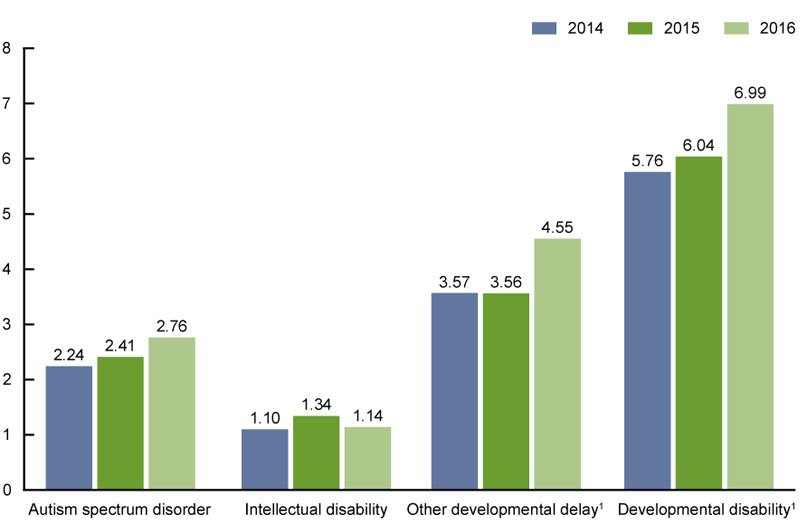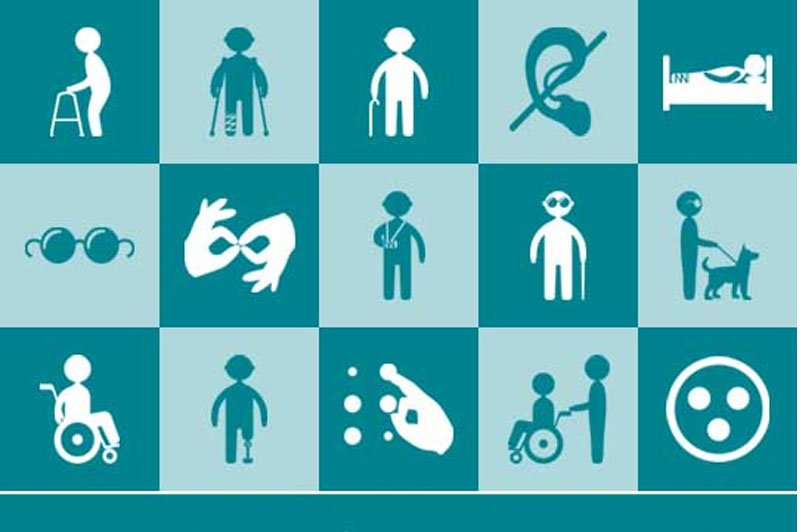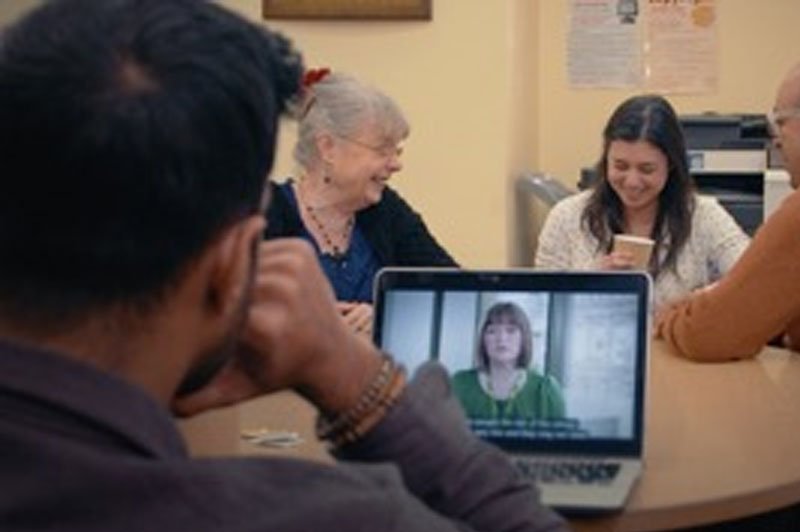I-MACX
Accessibility Lab
Breaking Social Inclusion Barriers...
About
As part of CSR activity, IIITB innovation center’s focus is to leverage technology for social inclusion by the way of helping civic-tech startups that focus on building socially-relevant solutions targeting healthcare, education, transportation, energy, governance and culture.
Also, the corporate policies have a commitment to inclusion across race, gender, age, religion, identity, and disabilities. But most of them have failed in providing sustainable and inclusive workplace. Digital accessibility is one such area which we consider as a biggest barrier towards social inclusion.
Digital accessibility means that electronic documents and information can be easily used by people with disabilities. If you have a policy to be digitally accessible, it means that your company is committed to ensuring its website, mobile apps, PDF documents, electronic statements and invoices and job application forms are all free of barriers that might prevent people with vision, hearing, mobility and other disabilities from using them.
With this momentum, we work on building solutions to break technological barriers to social inclusion through our Accessibility CoE. IIITB Accessibility CoE houses a highly passionate, certified digital accessibility specialists with tremendous industry knowledge striving towards:
- addressing wide variety of digital accessibility barriers
- establish a set of pragmatic principles guiding the beneficiaries to disseminate in their departments
- improving efficiency by providing best available resources
Vision & Mission
Our vision is to create an inclusive digital ecosystem. As per UNCRPD of 2006 (United Nation Convention on Rights of Persons with Disabilities), accessing web and contributing to web is a basic human right which cannot be discriminated in any form. Every company/organization have a legal implication of guidelines which are widely regarded as the international standard for Web accessibility. Though, this is not followed due to lack of awareness and expertise which also has a direct impact on social inclusion.
Our mission is to break technology barriers for a sustainable social inclusion by providing right information by the right people at the right time.
What we do?
The problem:
- Lack of awareness
- Myths & Mindsets
- Quality training
- Engaging people with disabilities on long-term basis
Lack of awareness
In the beginning of 20th century, accessibility started from a restricted application but nowadays it has become more comprehensive due to a better understanding of digital barriers in the world. Designers are not aware of how digital barriers restrict accessibility for different users. It should not be forgotten that accessibility for everyone will increase the whole citizens’ quality of life. Its been a myth and mindset that accessibility should be an afterthought, its hard and expensive, accessible designs are ugly. Thus, it’s important to raise awareness among the developer and tester communities for a better implementing of accessibility.
We proactively take part in conducting awareness programs, events, seminars & conferences for the benefit of educational, corporate and policy makers in implementing accessibility in learning process and social inclusion.
Quality training
The quality training programs in web and document accessibility is very essential for web leaders, content creators, and site developers. Because it may be difficult for everyone on a team who needs to know about accessibility to attend conferences or local training sessions, we offer online course materials and Instructor lead training (ILT) programs. We also conduct workshops in IIITB campus to benefit a larger audience with interactive training modules designed and hosted by industry experts.
Often times its observed that HR leads under diversity & inclusion policies have little or less knowledge about digital accessibility barriers while providing special accommodation. We conduct comprehensive training programs to give a better understanding of digital accessibility problems faced by people with special needs.
Engaging people with disabilities on long-term basis
Mostly, people with disabilities are hired on a temporary basis in the testing projects. Software testing and Accessibility testing is one of the cornerstones to manage risks within software development life cycle. It has matured from a side activity to a full-blown profession with its own domain and technical experts. The IT revolution in India has created many jobs that were non-existent earlier. Moreover, it is a sector which is accident-free and ideally suited for the visually impaired. Many technological advancements, development of special screen reader software and assistive devices have made training and performance of tasks easier than before.
There is a real need of training programs for the visually impaired to pursue job opportunities with the help of a unique workshops on Software Testing and Accessibility Testing that should resulted in a regular source of livelihood.
With this intent, IIITB in association with NGOs conduct crash courses that covers fundamentals of Software testing and Accessibility Testing. Candidates will be exposed to various methodologies in Software Testing. The training program will give them an in-depth knowledge of what is accessibility, importance of accessibility testing, various positive impacts of an accessible design. They will be engaged in various group discussions like usability vs. accessibility, various types of disabilities and challenges faced by them in Information & Communication technology and different ways to address them.
Digital Accessibility
Overview
Accessibility refers to the ability of people with disabilities to have access to and benefit from an entity or system. Digital Accessibility refers to the ability of users with disabilities to effectively utilize information technology (IT) systems including web sites, mobile or web based applications, software and hardware. Digital Accessibility is generally concerned with ensuring that IT systems are designed in such a way that they interact appropriately with assistive technologies. Extensive accessibility legislation is present in most of the major domestic markets including the United States, Canada, the European Union, Australia and Japan. Generally, the relevant portions of accessibility legislation require that organizations make best efforts in order to ensure that physical and electronic business areas can be used by individuals with disabilities.

Disability Demographics
Demographic trends throughout first world countries indicate that the citizens with disabilities, as part of the overall population, will grow over the next fifty years. This is generally interpreted as a sign that current disability legislation will be expanded or more aggressively enforced in the future.
Learn More
Disability Types
A disability is any condition of the body or mind (impairment) that makes it more difficult for the person with the condition to do certain activities (activity limitation) and interact with the world around them (participation restrictions).
Learn More
Assistive Technologies
Most people with severe disabilities use assistive technology in conjunction with core operating system functions to access information in digital systems. Assistive technology commonly refers to products, devices or equipment, whether acquired commercially, modified or customized, that are used to maintain, increase or improve the functional capabilities of individuals with disabilities.
Learn More
Web Accessibility Perspectives
There are many examples in society of innovations that were originally intended for people with disabilities but that have provided access benefits to all people (curb cuts and automatic door openers are two of the most common). Accessible web content is a similar innovation.
Learn MoreGuidelines & Laws
WCAG 2.0
The Web Content Accessibility Guidelines, often abbreviated to WCAG, are a series of guidelines for improving web accessibility. Produced by the World Wide Web Consortium (W3C), the WCAG are the best means of making your website useful to all of your users. Checkout more on WCAG principles, guidelines and conformance levels.
Learn MoreMobile Accessibility Guidelines
Mobile technologies are developing in leaps and bounds changing the world around. So it’s no surprise they are now used in educational and rehabilitating programs for people with special needs based on accessibility. The whole thing seems pretty basic now, yet we have no doubts its future is bright.
Learn MoreUniversal Design for the Physical World
Universal Design is the design and composition of an environment so that it can be accessed, understood and used to the greatest extent possible by all people regardless of their age, size, ability or disability. An environment should be designed to meet the needs of all people who wish to use it.
Learn MoreUniversal Design for Learning
Universal Design for Learning is an educational framework based on research in the learning sciences, including cognitive neuroscience, that guides the development of flexible learning environments that can accommodate individual learning differences. Checkout the CAST curriculum on UDL.
Learn MoreARIA Authoring practices
WAI-ARIA, the Accessible Rich Internet Applications Suite, defines a way to make Web content and Web applications more accessible to people with disabilities. It especially helps with dynamic content and advanced user interface controls developed with Ajax, HTML, JavaScript, and related technologies.
Learn MoreAccessibility Laws
According to the W3C, web accessibility is a practice of removing barriers so people with disabilities can “perceive, understand and interact with the web”. When websites are designed & developed with accessibility in mind, all visitors have equal access to, and can engage with, a site.
Learn MoreResources
Training
Don’t know where to start your accessibility journey? Read this section to find out the world class online and instructor lead training modules that best suits your needs.
Learn MoreEvents
Scale your knowledge about the policies, guidelines, testing & implementation techniques shared by the experts in the industry by attending events, conferences & webinars.
Learn MoreSimulation
Various kinds of simulation can help people understand how low vision or vision loss, mobility challenges and other disabilities can significantly affect their day to day activities.
Learn MoreAssistive Technology
Find out the best resources about accessibility features in desktops & mobile devices. Checkout the popular articles & videos archives on popular assistive technology & screenreaders.
Learn MoreBlog
The Global Accessibility Awareness Day (GAAD) is a day dedicated to celebrating existing digital accessibility efforts, and also fostering conversations on the importance of inclusion to inspire further action amongst designers, developers, and tech leaders.
Read MoreYou don’t have to be an expert tester or have good knowledge in testing tools and methodologies. One can perform a simple check to make sure if the website is usable at all. Follow the simple checks below to know the accessibility status of your website.
Read MoreAs per global demographics there are about 1 billion people on this planet who suffer from one or the other form of disability. So there are 1 billion reasons for an accessible product. However, the advantages of web accessibility aren’t limited to their immediate impact for people with disabilities. There are number of other benefits for organization, employees, and customers.
Read MoreJoin Us
In light of breaking technological barriers in social inclusion, we are optimistic that our community will benefit with a sustainable inclusion. It’s with excitement that we welcome corporates, industry experts, volunteers, philanthropies to join our mission.
Our agenda is your agenda, and we are passionate about advocating technology for social equality and constantly improving our programs.
We encourage you to reach out to us by filling and submitting the below form.
Contact Us
- IIITB, Electronic City, Phase 1, Bangalore
- 080-4444 4444 - IIITB Innovation Center
- info@example.com
- Mon-Fri - 08:00-19:00



